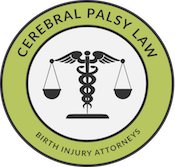The Signs and Symptoms of Cerebral Palsy
Before we delve into the different signs and symptoms of cerebral palsy, let’s take a moment to specify our terms:
- Signs of a condition or illness are factors that medical professionals can measure and confirm clinically. For instance, seizures are a common sign of cerebral palsy.
- Symptoms of a condition are the factors identified by a patient based on personal experience. For example, fatigue or irritability would be considered symptoms of cerebral palsy.
Because the impairments associated with cerebral palsy vary in form and severity, there is no single sign or symptom to inform diagnosis. In many cases, signs and symptoms of cerebral palsy don’t appear until after three to five years when a child’s brain finishes developing. Thus, since most cases of cerebral palsy become evident before children can express their own symptoms, it is very important for parents and medical professionals to be on the lookout for early signs. As you’ll read in our segment about diagnosis, it is crucial to detect cerebral palsy early to avoid subsequent impairment or injury.
If your loved one was diagnosed with cerebral palsy as the result of an otherwise avoidable medical mistake, we encourage you to contact our Detroit, Michigan cerebral palsy lawyers today. Our birth injury team will provide you with a free case review, determine if medical malpractice caused your loved one’s injuries, and inform you of your legal options. Should we take your case, the Michigan Cerebral Palsy Attorneys no-fee policy ensures you will not be charged until we win or settle. You may contact our Michigan birth injury attorneys toll-free at (888) 592-1857, fill out this online contact form, press the Live Chat tab to the left, or press the following contact button.
What Are the Signs and Symptoms of Cerebral Palsy?
For most families, the earliest signs of cerebral palsy are signified by developmental delays. However, families and medical professionals should monitor their children for the following signs and symptoms:
1. Medical signs
- Baby fails to breathe immediately after delivery
- Weakness or lack of muscle tone (floppiness or hypotonia); limbs held in awkward position
- Seizures
- Joint and bone deformities (with eventual pelvic bone tilting and scoliosis)
2. Coordination and control impairments
- Spasticities and spasms
- Tremors and involuntary movements
- Difficulty grasping objects
3. Gait abnormalities
- Lopsided crawling
- Walking with an abnormal gait, such as the scissor gait
- Imbalance
4. Retention of the common primitive reflexes
Primitive reflexes are the reflex actions in the central nervous system that infants exhibit, but not neurologically healthy adults. Ideally, they these reflexes develop in a particular order and sequence. If infants develop primitive reflexes out of order or retain them beyond the normal age of integration, they can disturb the functions of high centers like behavior, learning, and gross or fine movements. Retention of the following primitive reflexes often signals cerebral palsy:
- Tonic neck reflex
- Grasp reflex
- Rooting reflex
- Step reflex
- Crawl reflexes
5. Developmental delays
- Favoring one side of the body over the other
- Failure to blink at loud noises by one month
- Failure to turn head toward sounds by four months
- Difficulty speaking after twelve months
- Frequent vomiting and difficulty swallowing, chewing, and sucking
- Delays in reaching motor skill milestones
- Inability to control bladder and bowels
- Failure to sit up by seventh months of age
- Failure to develop gross, fine, and oral motor function
- Failure to hold the hands together
- Difficulty pushing up with the hands
- Inability to stand while holding onto support
6. Delayed postural reactions
- Righting reactions, which align the head with the body and the upper body with the lower body
- Equilibrium reactions, which return the body to a vertical position after displacement
- Protective reactions, which protect the body from falling if it has been displaced
7. Other signs and symptoms of cerebral palsy
- Fatigue
- Problems with senses (particularly hearing and vision)
- Tenseness and irritability
Video: Signs and Symptoms of Cerebral Palsy and Birth Injuries
Learn more about the signs and symptoms of cerebral palsy, hypoxic ischemic encephalopathy, and other birth injuries in the following video. Andrea Shea, the registered labor and delivery nurse on the Michigan Cerebral Palsy Attorneys staff, explains the signs of cerebral palsy that doctors and parents should be looking for in a newborn, toddler, or young child.
Legal Help for Cerebral Palsy and Birth Injury
If your child has been diagnosed with cerebral palsy or a birth injury that you believe resulted from a medical professional’s violation of the standard of care, fill out our online contact form or call our experienced Michigan cerebral palsy lawyers today at (888) 592-1857. Our passionate and skilled lawyers will evaluate your case for free, answer your questions, and inform you of your legal options.
Sources:
- Miller, G. Diagnosis and classification of cerebral palsy. In: UpToDate, Hoppin, AG (Ed), UpToDate,
Waltham, MA, 2013.
